Raiders Wrestlers are League Champions
- Details
- Written by Joanne Wallenstein
- Hits: 4739
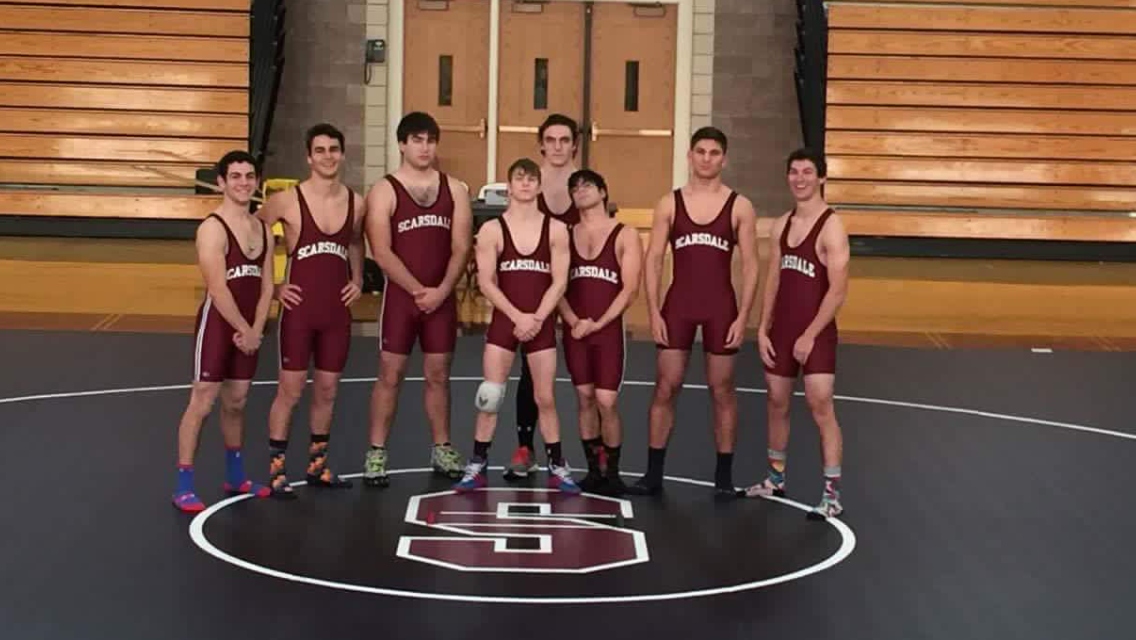 Scarsdale Raider Wrestling Team had a banner 2015-16 season! Led by an extremely talented group of seniors, the team placed in the top three of every tournament and brought home 1st place at their own Scarsdale Invitational. The team finished with a 21-7 record. The Raiders brought home the League 1A Championship finishing 5-0 in the league. The last league championship Scarsdale won was in 1999. The team qualified 8 boys for Sections and had three boys place in the top 4. The season was capped off with 113Lbs Michael Dabramo receiving a wildcard for the State tournament where he placed fifth in the State. He finished with an amazing 46-6 record. His only losses came from Nationally ranked wrestlers.
Scarsdale Raider Wrestling Team had a banner 2015-16 season! Led by an extremely talented group of seniors, the team placed in the top three of every tournament and brought home 1st place at their own Scarsdale Invitational. The team finished with a 21-7 record. The Raiders brought home the League 1A Championship finishing 5-0 in the league. The last league championship Scarsdale won was in 1999. The team qualified 8 boys for Sections and had three boys place in the top 4. The season was capped off with 113Lbs Michael Dabramo receiving a wildcard for the State tournament where he placed fifth in the State. He finished with an amazing 46-6 record. His only losses came from Nationally ranked wrestlers.
The stats for the eight wrestlers that went to Sectionals are: 99lbs Johnny Keltz,25-14,113lbs Michael DaBramo 46-6,113lbs Jack Ortner 16-13, 132lbs Seth Schulman 25-14, 170lbs Raphael Rogoff 17-16, 182lbs Andrew Braun 31-8, 195 lbs Brendan Knaack 25-10, and at heavyweight 285 lbs Ethan Raff 32-9.
The three seniors who were named All Section were Brendan Knaack, Ethan Raff took and Michael Dabramo.
Scarsdale Native Curates Exhibit at Fairfield University
- Details
- Written by Joanne Wallenstein
- Hits: 4071
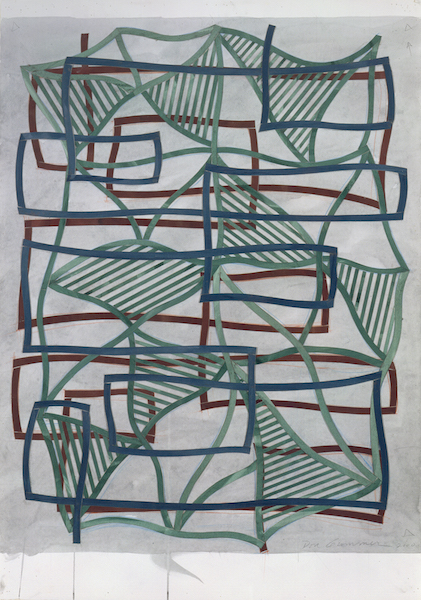 "Don Gummer, The Armature of Emotion: Drawings and Sculpture" will be on view at Fairfield University's Walsh Art Gallery, from March 3 – June 11, 2016. The exhibition has been organized by Scarsdale's Linda Wolk-Simon, Director and Chief Curator of the Museums of Fairfield University.
"Don Gummer, The Armature of Emotion: Drawings and Sculpture" will be on view at Fairfield University's Walsh Art Gallery, from March 3 – June 11, 2016. The exhibition has been organized by Scarsdale's Linda Wolk-Simon, Director and Chief Curator of the Museums of Fairfield University.
The exhibit is a major survey of Gummer's works and includes more than 50 drawings, watercolors, cardboard and bronze models, wall reliefs, and free-standing bronze and steel sculptures by the artist. Gummer's richly-layered, cerebrally composed drawings incorporate color, encaustic (an ancient technique in which pigment is suspended in wax) and collage. In scale, they range from quick, small sketches, to elaborate monumental panels that are tapestry-like in their grandeur and proportions. Although all Gummer's drawings typically have the character of finished, autonomous creations regardless of size, many are in fact stages of a genesis: they are preliminary ideas and studies for sculptures, which show him working out, evolving, and testing different vantage points or compositions. The essential role of drawing in his creative process as a sculptor, and the fluidity of forms and ideas that mutate and migrate between media, are among the central themes explored in the selection of works on view.
Within Gummer's oeuvre certain themes and motifs recur. The exhibition presents a number of these groups of interrelated works. One is the series "Darwin's Map," which is iterated in collage drawings and wall reliefs. In both media, ribbon-like bars of color, at once fluid and masterfully controlled, form layered kaleidoscopes — suggestive, paradoxically, of stasis and flux.
Another group of work has the Twin Towers 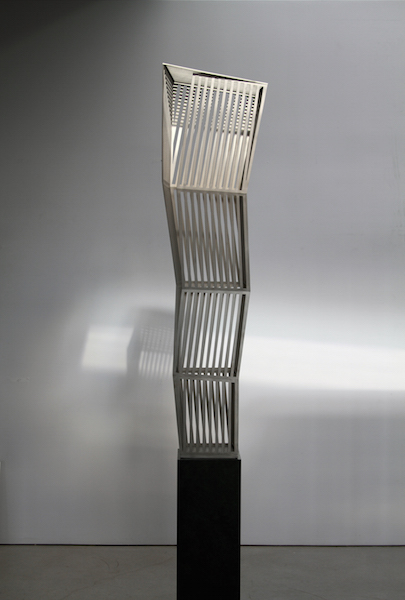 as its subject and inspiration. Gummer executed a series of watercolors of the buildings only weeks before they were destroyed on September 11, 2001. In some they appear rigid and immutable, in others shifting and ethereal, dissolved in an atmospheric haze. Some five years after the disaster Gummer returned to the subject in a stainless steel sculpture, which will be on view in the Quick Center for the Arts.
as its subject and inspiration. Gummer executed a series of watercolors of the buildings only weeks before they were destroyed on September 11, 2001. In some they appear rigid and immutable, in others shifting and ethereal, dissolved in an atmospheric haze. Some five years after the disaster Gummer returned to the subject in a stainless steel sculpture, which will be on view in the Quick Center for the Arts.
Architecture is a leitmotif in Gummer's art and another focus of the works presented in the exhibition. Building things has always been an impulse for the artist who, early in his career, worked as a carpenter and a construction worker. (Many of his drawings and monumental sculptures have the character of a building erected to the framing stage, a residual and lingering imprint of that experience.)
Gummer's art is full of paradoxes. Movement and repose, exuberance and restraint, emotion and reticence, gravity and weightlessness, volume and void — these antitheses are perfectly synthesized in his compelling, poetic works.
everything he creates.
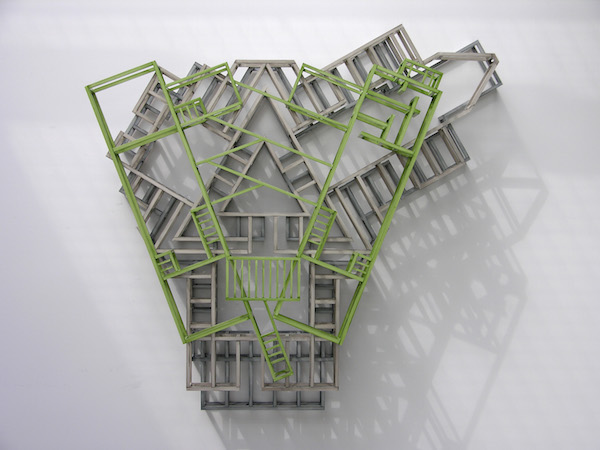
 Linda Wolk-Simon, Ph.D., a veteran curator at The Metropolitan Museum of Art, as the new director of the Bellarmine Museum, Thomas J. Walsh Art Gallery and University curator. She came to Fairfield after 25 years at The Metropolitan Museum of Art, where, from 1986 to 2011 she served in many posts, including curator, Department of Drawings and Prints. Prior to that she was the assistant curator of the Robert Lehman Collection at the Metropolitan, a diverse collection of paintings, sculpture, textiles, glass, ceramics and old master drawings. While at The Met, she organized a highly attended Raphael exhibition and was co-curator of the well-received Art and Love in Renaissance Italy.
Linda Wolk-Simon, Ph.D., a veteran curator at The Metropolitan Museum of Art, as the new director of the Bellarmine Museum, Thomas J. Walsh Art Gallery and University curator. She came to Fairfield after 25 years at The Metropolitan Museum of Art, where, from 1986 to 2011 she served in many posts, including curator, Department of Drawings and Prints. Prior to that she was the assistant curator of the Robert Lehman Collection at the Metropolitan, a diverse collection of paintings, sculpture, textiles, glass, ceramics and old master drawings. While at The Met, she organized a highly attended Raphael exhibition and was co-curator of the well-received Art and Love in Renaissance Italy.
In addition to her curatorial expertise, Dr. Wolk-Simon has a strong teaching background, having conducted and co-taught numerous undergraduate and graduate seminars and classes at the Metropolitan and the Morgan on Italian Old Master Drawings and other topics, and lectured extensively on Italian art in various adult education programs.
Dr. Wolk-Simon holds a Ph.D. in history of art and a B.A., summa cum laude, both from the University of Michigan, Ann Arbor.
Local Rabbi Defends Human Rights in the Dominican Republic
- Details
- Written by Joanne Wallenstein
- Hits: 5771
 Rabbi Brown from Scarsdale Synagogue recently took a trip with the American Jewish World Service (AJWS) to visit the Dominican Republic as part of the AJWS Global Justice Fellowship mission. The rabbinical delegation, comprised to ten rabbis, travelled across the Dominican Republic, meeting with AJWS grantees working to address some of the most pressing human rights issues in the region.
Rabbi Brown from Scarsdale Synagogue recently took a trip with the American Jewish World Service (AJWS) to visit the Dominican Republic as part of the AJWS Global Justice Fellowship mission. The rabbinical delegation, comprised to ten rabbis, travelled across the Dominican Republic, meeting with AJWS grantees working to address some of the most pressing human rights issues in the region.
"Our trip focused heavily on the Dominican government's 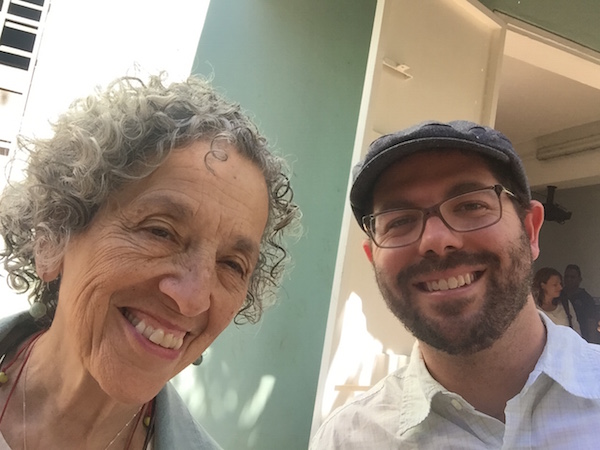 policies related to residents of Haitian descent," Rabbi Brown said, "which is threatening to strip citizenship rights from hundreds of thousands of Dominicans simply because they have ancestors from Haiti." On the mission, he learned more about what has been characterized by AJWS and other human rights organizations as a "cynical, bureaucratic government response" to Dominicans of Haitian descent who wish to retain their citizenship rights.
policies related to residents of Haitian descent," Rabbi Brown said, "which is threatening to strip citizenship rights from hundreds of thousands of Dominicans simply because they have ancestors from Haiti." On the mission, he learned more about what has been characterized by AJWS and other human rights organizations as a "cynical, bureaucratic government response" to Dominicans of Haitian descent who wish to retain their citizenship rights.
Rabbi Brown noted that many Dominicans or Haitian ancestry have been "marginalized by their government because of their poverty, gender, sexual orientation, skin color, occupation, or ancestry. But I witnessed, with my own eyes," he continued, "that there is the possibility of change, spurred by the community-based activities of the many new friends I was fortunate to make while traveling throughout the Dominican Republic. This mission enabled me to bear witness to the power of morally motivated community leaders, bolstered by the generous financial support of the worldwide AWJS organization, to try to make this part of our planet a better place."
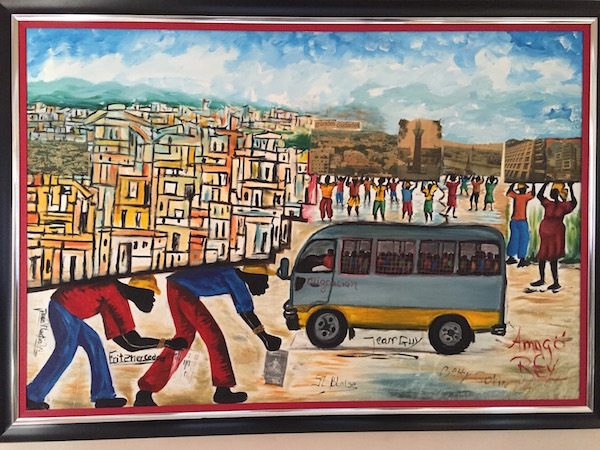 "In that same vein," Rabbi Brown concluded, "it is part of my spiritual commitment -- and my very being -- to help fulfill the duty we have as Jews to stand up against injustice and preserve, protect and advance human dignity."
"In that same vein," Rabbi Brown concluded, "it is part of my spiritual commitment -- and my very being -- to help fulfill the duty we have as Jews to stand up against injustice and preserve, protect and advance human dignity."
We asked Rabbi Brown a few questions and here is what he shared:
Was this your first AWJS trip?
It was my first international travel with AJWS. I am proud that Scarsdale Synagogue has collaborated on several programs/speakers with AJWS over the last few years.
Did the delegation meet with officials in the Dominican Government?
We did not meet with any officials from the Dominican government. We did meet with Deivis Ventura, the first openly gay politician to seek federal elected office there. And we met with American embassy officials in the D.R.
How are Jews received there?
My limited understanding is that there is not a lot of anti-Semitism there. (FYI, the D.R.'s Jewish population is quite small.) When it comes to relations with Jews, the D.R.'s "claim to fame" is that it was one of the very few Western hemisphere countries to welcome in Jews fleeing from Europe during World War II.
But the truth is that our journey was singularly focused on AJWS's on-the-ground development work that it is doing with local Dominican NGO's.... training locals to advocate for themselves and their communities. In terms of issue areas - AJWS focuses on the issue of statelessness and the issue of gender/sexual orientation discrimination in the D.R.
What were your main takeaways from your meeting?
The journey was extraordinary and eye-opening. You can read my longer reflections about the trip in the series of blog posts here. But in summary, my main takeaways were:
Poverty makes everything worse. There are significant societal/cultural challenges that the D.R. must navigate in the years ahead, namely: (1) the sense of racism that exists towards those of Haitian descent; and (2) the socially accepted misogyny, which condemns too many women to the margins, and in many cases accepts gender-based violence and even femicide (the murder of a woman just because she is a woman) as a basic 'fact of life.' But these challenges are exacerbated by the widespread poverty that so many Dominicans face. According to the World Bank, one of every two Dominicans lives below the poverty line - where the poverty line is defined as earning $1.25 or more per day.
There are many different approaches to international development work, but a "human rights-based approach" - the approach of AJWS - seems to me to be the most effective. It is an approach that affirms grass roots activism and seeks to empower local residents in developing nations to be their own best advocates for social/political change. With my own eyes, I witnessed the transformative power of organizing and activism...to change Dominican society, and the lives of these activists, for the better.
Although the United States is 1572 miles from Santo Domingo, there is a lot that Americans can do to get involved. (1) We can get informed. The New York Times did a wonderful civic service on the statelessness issue, for example, by running this recent piece in the Sunday Magazine. It's an easy, accessible way for people to learn about a horrific human rights crisis going on in our backyard. (2) We can lift up our voices and let American politicians know we are concerned about the situation, and that we want the American government to use its considerable influence to lean on the Dominican authorities. Readers can add their name to the AJWS petition here. (3) Readers that are so inclined might consider making a small philanthropic gift to AJWS by clicking here. Every years, AJWS grants out tens of millions of dollars to local NGO's around the world who are empowering themselves to make their countries safer and more inclusive for everyone who lives there.
Neighbor Taps Elderly Man's Waterline
- Details
- Written by Joanne Wallenstein
- Hits: 5050
 (This letter was sent in by a Scarsdale10583 reader who asked to remain anonymous) I read the police blotter so I am familiar with the stories about phone scams, home health aide workers procuring money from their elderly charges, and brazen thieves stealing handbags from cars parked on our local streets. Last spring, when my father returned home from Burke Rehabilitation with 24-hour home healthcare I was mindful of the stories I have read over the years and took the proactive step to manage his finances from my home. I reminded him and his aide of all of the phone scams – and made it clear that he should not divulge his social security number to anyone and that his two grandsons were safe and sound in college and did not need their grandfather to send them money at any time. I explained to each aide that they should not leave their handbag in their car when parked outside of my father's home and to always lock the car doors.
(This letter was sent in by a Scarsdale10583 reader who asked to remain anonymous) I read the police blotter so I am familiar with the stories about phone scams, home health aide workers procuring money from their elderly charges, and brazen thieves stealing handbags from cars parked on our local streets. Last spring, when my father returned home from Burke Rehabilitation with 24-hour home healthcare I was mindful of the stories I have read over the years and took the proactive step to manage his finances from my home. I reminded him and his aide of all of the phone scams – and made it clear that he should not divulge his social security number to anyone and that his two grandsons were safe and sound in college and did not need their grandfather to send them money at any time. I explained to each aide that they should not leave their handbag in their car when parked outside of my father's home and to always lock the car doors.
It never dawned upon me that my father's neighbors would be the ones to rob him of his dignity and his property.
The moment he returned home we realized he could no longer manage the stairs at the back of his house, which required him to traverse the lawn to enter his home through his front door. His comings and goings are difficult as he is shaky on his feet and fearful of falling. Further complicating the process are the piles of dog poop that he has to navigate on his front lawn. In an attempt to stop the poor behavior of the dog owners who do not pick up after their animals, we placed a cute, plastic sign in the shape of a dog reminding dog owners to curb their dog. It was stolen within one day. Now there are two, not-so-cute signs on his property that say 'keep off the grass'. Still his neighbor's dog(s) use his front lawn as their public restroom and their owners leave it behind.
This past Saturday, on a beautiful day in February, we discovered that his neighbor was taking more from him than his front lawn. It turns out my father's next door neighbor has been instructing her car washing service to use my father's water spigot and hose to wash her cars. It is unclear whether this began when the neighbor turned off her outside water for the season, or if this has been on-going. When I asked the homeowner if perhaps the story had been relayed to me improperly, she told me indeed she has been "innocently" using my father's hose and water. She went further to tell me that her car washer is only at her home monthly - as if it's okay to use his property since its only monthly. I suggested twice that she should have asked first, however she did not acknowledge this with agreement or an apology. She simply stated that her use of his property was an innocent move. It certainly may have been. And I gave her the benefit of the doubt, hoping she would ring his doorbell the next day to take responsibility for her mistake. I was sorely disappointed.
We take all of the precautions to protect ourselves from strangers robbing us. We secure our homes with alarms and cameras. We diligently sign up for identity theft alerts and services. We do background checks on our nanny and home healthcare workers. Somehow, though, we don't suspect that our neighbors will be the ones to rob us of our dignity and our property. Perhaps I am naïve.
I have asked that this story be published anonymously because I am sure my father's next door neighbor will live in Scarsdale for many more years. I want to permit her to walk through town with her head held up high ... something my father can't do because he's too busy looking out for dog poop!
Beware of Internet Scams
- Details
- Written by Carol S. Wolfe
- Hits: 10297
 Scammers are busier than ever with attempts to access your computer, get personal information and steal your identity. Scarsdale's Carol S. Wolfe is a computer consultant who is available to help you with IT solutions and protect you from evil doers who have become increasingly crafty at scamming consumers. I know in the past week I received two phone calls from people who claimed that my computer had been infected with malware and attempted to get me to give them access to my desktop. If you receive a phone call from "Tech Global Services," my advice is to hang up.
Scammers are busier than ever with attempts to access your computer, get personal information and steal your identity. Scarsdale's Carol S. Wolfe is a computer consultant who is available to help you with IT solutions and protect you from evil doers who have become increasingly crafty at scamming consumers. I know in the past week I received two phone calls from people who claimed that my computer had been infected with malware and attempted to get me to give them access to my desktop. If you receive a phone call from "Tech Global Services," my advice is to hang up.
Carol has put together the information below to help you stay clear of internet fraud. Here's her advice:
TRUST NO ONE!
I am very disconcerted about the way hackers or miscreants are trying to get into our computers. I have seen the following:
1. Phone calls to YOUR homes indicating that:
a. This is a Follow Up to something they have already worked on
b. Something is wrong with your computer and they need access to help you
2. Pop Ups from the following sources indicating that your Computer requires immediate attention.
a. MacKeeper (BAD)
b. Tune Up My Mac (BAD)
c. Other sources
3. Spoof Emails that look real but aren't from:
c. Facebook
d. iCloud
e. PayPal
f. Google
g. Ebay
4.Spoof Emails from MYSELF - yes - they are addressed to me BY me with my correct email address in the "From" field.
At any rate, my main advice to you is to TRUST NO ONE! If you receive an email from your bank or from any other source that is asking you to verify your information, DON'T! Either call the bank or the other source or go directly to their website and check it out directly. Do NOT click on any links. Also, if you are constantly getting redirects or popups on your computer, it means you've been infected with MalWare.
My recommendation is to go to the site www.adwaremedic.com and install malwarebytes and scan your computer. If the redirects are so bad that you can't get there, call me and I can clean your computer enough so that we can scan it and clean it up. If you want to read more about MalWare and the latest news on new malware, click here.
You can install malwarebytes on your PC as well as Mac.
In addition, I have recently read articles about "ransoming" mac computers. While this is more prevalent at the Corporate and PC level, there has been recent news about it possibly infiltrating Mac computers. I will keep an eye on this, but click here if you are interested in learning more about it.
Another way to infect or bring malware onto your computer is to download applications from third party sites. A lot of time when I come to your homes and I see malware, I always ask, do you share your computer with your kids? To make your computer a little bit safer against unwanted downloads, go to the Apple (upper Left corner), choose System Preferences/Security & Privacy/General - then check Allow applications downloaded from Mac App Store and identified developers. At least if your kid tries to download something, he/she will need the computer password to do so.
Click here for an article about the perils of downloading from an inappropriate site.
A friend of mine who works at DropBox told me that if you are a Pro Subscriber, you should be all set in terms of hijacking because of  their extended version history feature. I am currently slowly moving my data over to DropBox and can help you if you are interested.
their extended version history feature. I am currently slowly moving my data over to DropBox and can help you if you are interested.
Good luck and stay safe!
You can reach Carol at 914.924.7949, email her at cswolfe@mac.com or visit her website here: www.csjconsultants.com












